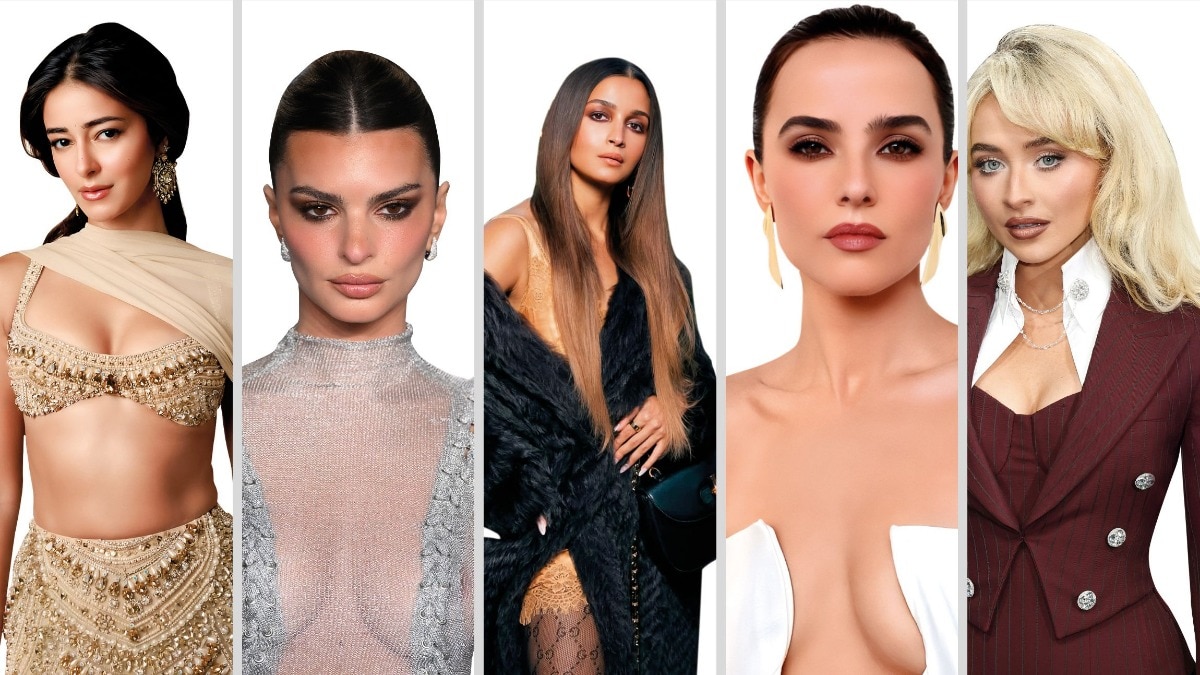Why Barbiecore continues to make a compelling case for pink power play
Are you really ready for a hot-pink takeover?


The cultural history of pink paints a vivid picture that is as limitless as the multiverse, purposefully pushing through the finite politics of contradictions, yet, often mirroring a broader social change underway. Used to many significant “moments” over time, the colour, in its latest post-lockdown-phase, is vying for attention like a kid gone rogue in a candy store. In the Barbiecore avatar, it’s refusing to pander to subtlety, fuelled by designers like Valentino (who especially collaborated with Pantone to develop the colour—“Pink PP”) and Balenciaga, Greta Gerwig’s highly anticipated Barbie movie releasing in 2023, and a slew of celebrities taking to the Barbiecore aesthetic as passionately as they would have taken to playing with their Barbies, back in the day.

The hyper-feminine trend wants to be inclusive, but does it really make a strong case for being doused in various shades of pink from head-to-toe? It’s clear that it crushes the Grandmacore and Cottagecore aesthetic everyone seemed to be comfortable in the early days of their slow crawl out of the pandemic, but in its expansiveness, it can often remain limiting in its adoption.
With the exception of Harry Styles at Coachella (maximalist chameleon) and Conan Gray (the only two men on our list rocking the trend), celebrities like Anne Hathaway, Kim Kardashian, Zendaya, Megan Fox, Nicki Minaj and a long list of other adoptees, meet a certain body type, closer to Barbie’s perfect measurements. Who has been pushing the envelope? Glenn Close when she showed us that age is just a number as she Barbiecored the life out of the raging trend, while American singer Lizzo championed body positivity, charming the papz and us in a Valentino A-line mini dress recently.

You can hate it, you can like it, but you cannot ignore it. Truth is, the colour pink has had its fair share of evolutionary sartorial origin stories.
In the 17th century, Chinese word for pink meant “foreign colour”, in Japan it served as the symbol of the slain Samurai, in Korea it was known to be a sign of trustworthiness, while it was only in the 18th century that the shade was popularised by the Eurpoean bourgeoise. It was Madame de Pompadour, a mistress of Louis XV who is said to have made the colour widely popular. The French porcelain manufacturer Sèvres named its stunning new shade of pink, Rose Pompadour after her in 1757. With no abject affiliation to gender, the tint of pink was often considered more suitable for boys since it was a paler shade of red, and had “masculine” military undertones.
It wasn’t until the turn of the 20th century that the colour went mainstream in its evolution from once being considered predominantly luxe, to now becoming accessible to the working-class, thanks to industrialization that made large-scale production possible. Cheap dyes like magenta resulted in mass produced bright and garish versions of the colour. Although French couturier Paul Poiret made dresses in the first two decades of the century in various shades of toned-down magenta, elevating it back into the annals of high fashion.

Democratic and divisive, pink has seen a spectrum of change in its acceptance. For instance, in the 1950s, pink started to be firmly categorized as hyper-feminine, propounding “pink for girls, blue for boys” stereotype. On the other hand, the colour became a flag bearer for ‘Gulabi Gang’ – a remarkable women’s movement led by Sampat Pal Devi in Banda district of Uttar Pradesh started in 2006. Members of the group would wear bright pink saris and wield bamboo sticks to combat domestic violence, resorting to their sticks only when men resorted to the use of force.
With Barbiecore dominating everything from fashion, décor, to even make-up trends, the need to be seen is hot and heavy ATM. So much so, that according to data shared by Klarna (global retail bank, payments and shopping service) pink mini dresses have seen a 970% increase, and pink swimsuits have seen a 682% increase in the past six months, while Pinterest reported that their site has seen a 75% increase in the search for “Barbie Outfit”. Pretty sure the good people at Mattel find this organic resurgence in 2022 working to their advantage, after facing staggered backlash for creating dolls that negatively impact young girls and women to meet impossible body standards. Even though Barbie is known to have 150 careers in her resume, the promise of pink-drenched Barbie world, is currently, unprecedented.

According to Sujata Assomull, founding former Editor-in-Chief of Harper’s Bazaar India, journalist, and author, the Barbiecore trend is more Instagram and influencer driven. She says, “The trend is difficult for most women to carry. Shades of pink have continued to evolve from millennial pink, to Valentino, and now with Barbiecore, it’s so in-your-face that it has to be a fad. The colour will remain around, but the styling and the way people are spending to put the look together is worrying with so much money being poured into it. The thing is, it is limited to looking good on a certain hour-glass body-type.” She adds, “The trend is an offshoot of dopamine dressing. We are seeing a lot of colour making its way back into fashion, after being ‘printed-out’ pre-pandemic. Living in the social media era you need something that makes an impact, and that’s where Barbiecore edges others out at the moment.”
Speaking to Assomull on our history and tendency as a collective to dive into statement-making choices after years of lack and austerity, plus, a global calamity (as was the case post World War 1 and 2) she says, “If I take you back to 1940s and 47, after a big calamity, historically, we tend to get a bit feminine after being slouchy for long periods of time. Barbiecore is a big thing right now, but I don’t see it being carried forward in 2023. What will however stay is the colour trend.”
Feeding into consumer frenzy, brands are more than happy to cater to the Barbiecore trend given the legion of followers on social media already. On Google alone, the trend pulled up 1 billion search results at the time of writing the piece, while on TikTok it has garnered over 45 million views so far.
Sukriti Grover, designer and celebrity stylist to the stars, hot-take on the Barbiecore trend—“Barbie never really leaves us and she’s experiencing a come-back like no other. The trend is a playful one that is all about embracing the lively and bubbling with energy—basically having fun with fashion. The trend is also turning hyper femininity on its head. Valentino’s FW 2022/2023 collection saw pink platform heels, pink coats, and tailored pink parading down an entirely pink runway with pink walls. It encompassed everything from dopamine dressing, gender politics, to Y2K nostalgia, which is all true to the Barbiecore trend.”
True to form in 2022, where the world is spinning faster (literally and figuratively) than we can make sense of it, and resilience has become as oft-used as hybrid, Barbiecore will continue to bedazzle before we have had enough of the gleeful cheer. I mean, come on, too much of anything after a point becomes an overkill! Soon enough, endorphin dressing may replace ODing on dopamine, then what? It will be our core finally looking beyond the matrix of impossible trends trying to seek a happy equilibrium.
Until then, may we all rise to, “Come on, Barbie, let’s go party?”
Oh Yeah! Oh yeah?
Lead Image: Zendaya Instagram
Kim Kardashian Image: Instagram
Gulaabi Gang Image: Gulaabi Gang Website
Margot Robbie and Ryan Gosling Image: Instagram










